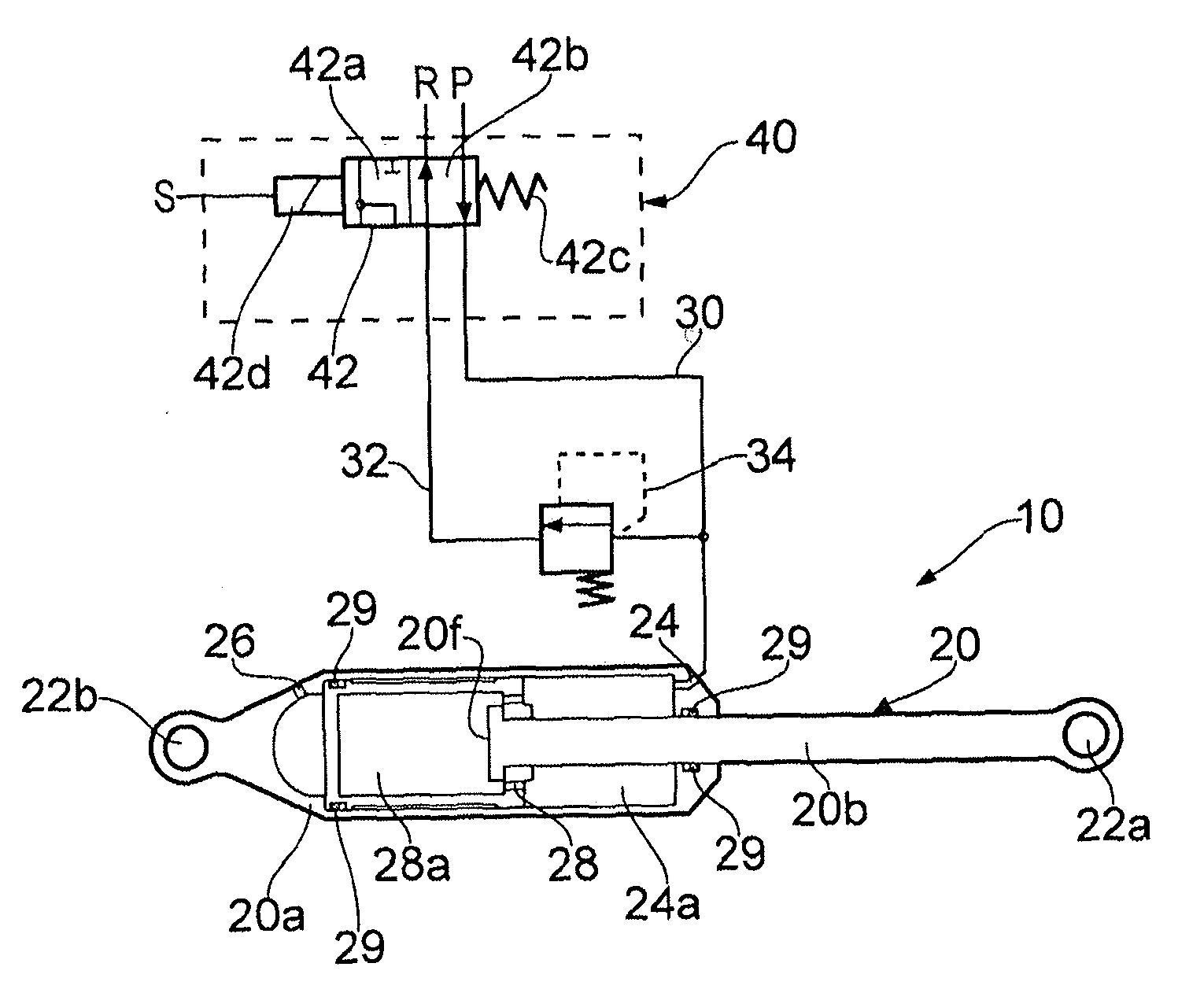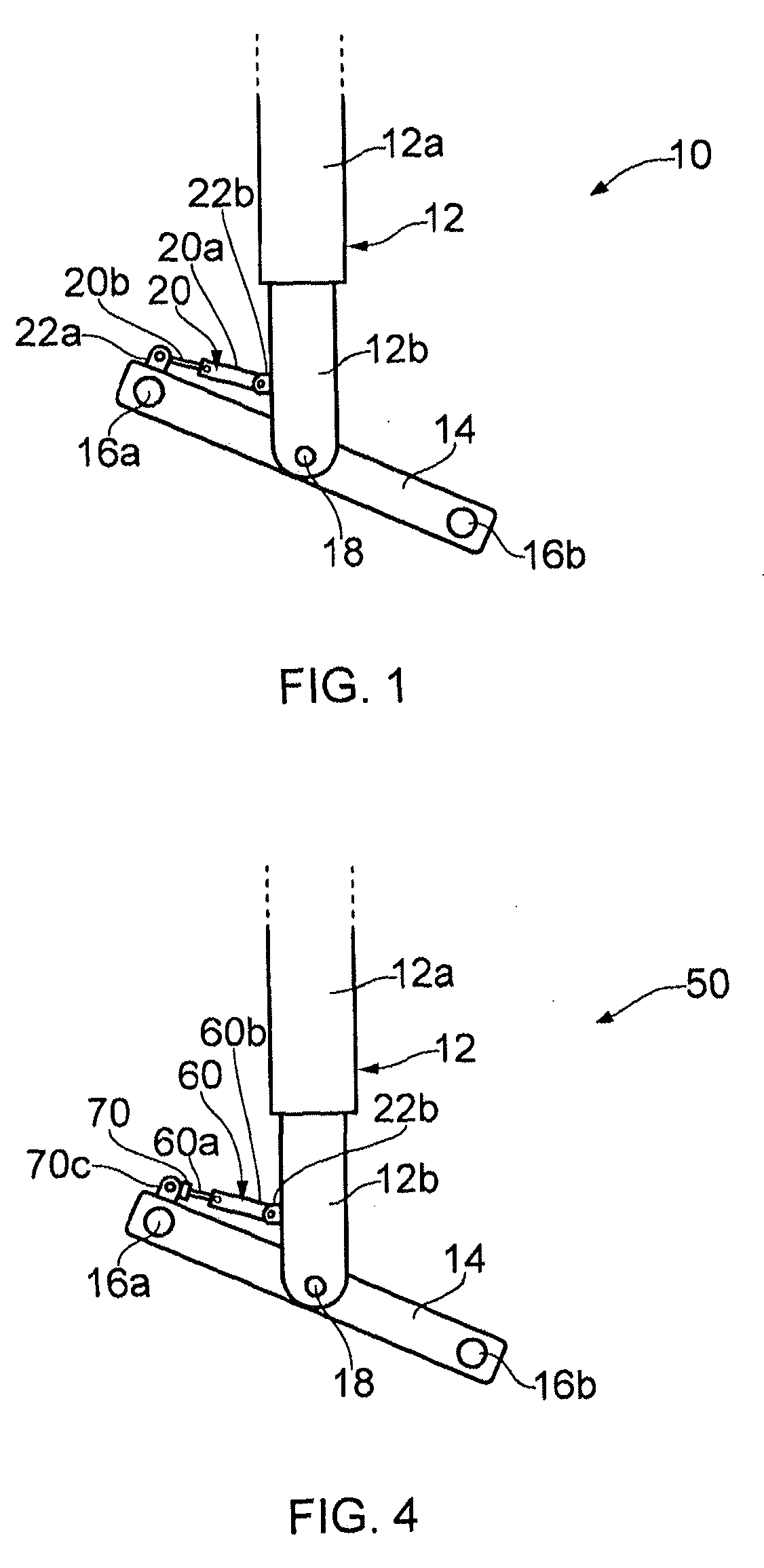Aircraft landing gear
- Summary
- Abstract
- Description
- Claims
- Application Information
AI Technical Summary
Benefits of technology
Problems solved by technology
Method used
Image
Examples
Embodiment Construction
[0044]FIG. 1 shows a partial, schematic side view of a landing gear 10 according to a first embodiment of the present invention. The landing gear 10 includes a main strut 12, having an upper portion 12a arranged to be coupled to the underside of an aircraft (not shown) and a lower portion 12b telescopically mounted with respect to the upper portion 12a. A bogie beam 14 is pivotally coupled to the lower portion of the main strut 12b, the bogie beam 14 having first and second axles 16a, 16b mounted on it, each axle 16a, 16b carrying one or more wheel assemblies (not shown). A landing gear according to embodiments of the present invention may have any suitable number of axles and wheels per axle.
[0045]A linkage 20 is pivotally coupled to the bogie beam 14 at a first coupling region 22a and pivotally coupled to the lower strut portion 12b at a second coupling region 22b. In the illustrated embodiment the linkage is defined by an actuator 20. As will be appreciated, pivotal movement of t...
PUM
 Login to View More
Login to View More Abstract
Description
Claims
Application Information
 Login to View More
Login to View More - R&D
- Intellectual Property
- Life Sciences
- Materials
- Tech Scout
- Unparalleled Data Quality
- Higher Quality Content
- 60% Fewer Hallucinations
Browse by: Latest US Patents, China's latest patents, Technical Efficacy Thesaurus, Application Domain, Technology Topic, Popular Technical Reports.
© 2025 PatSnap. All rights reserved.Legal|Privacy policy|Modern Slavery Act Transparency Statement|Sitemap|About US| Contact US: help@patsnap.com



